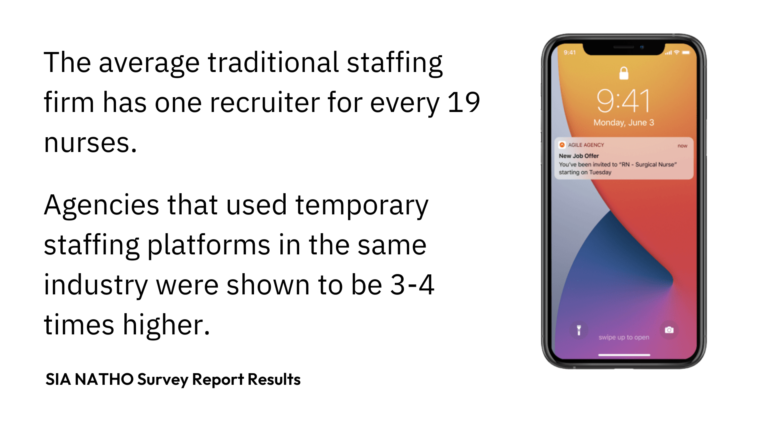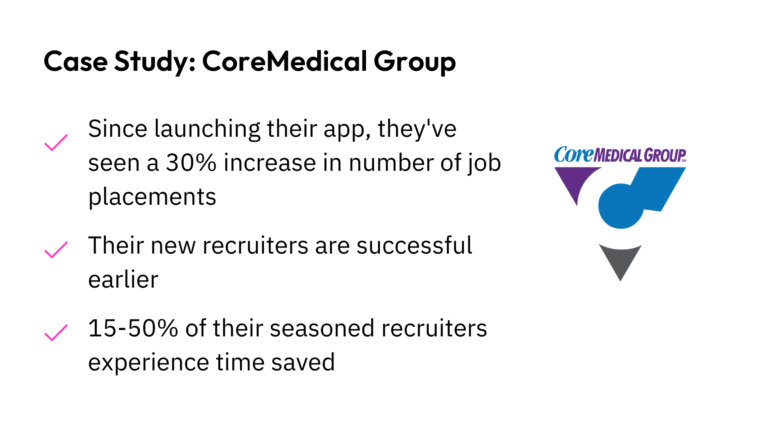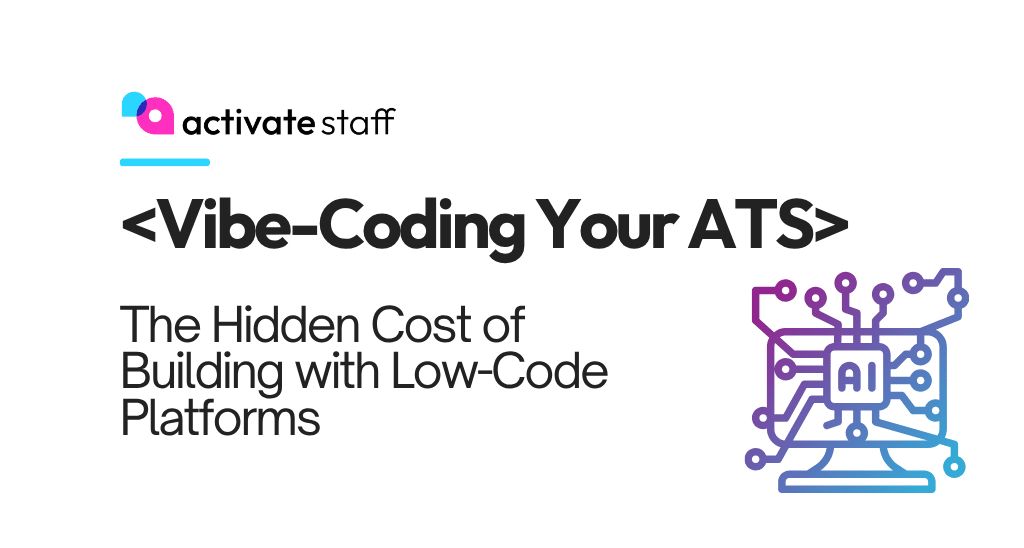Staffing platforms, sometimes called temporary staffing platforms or on-demand staffing platforms, are a technology that optimizes the process of filling jobs primarily by providing a seamless mobile experience for candidates. Often involving the automation of repetitive tasks usually done by the recruiter, it offers self-service options for candidates to input information and complete other manual to-dos. It’s the faster, better, and cheaper option on the market to streamline processes and increase productivity.
In part 2 of our 3-part in-depth guide to understanding staffing platforms, we cover all the main features and their benefits to staffing firms, from recruiters to clients and candidates.
Explore other parts in our staffing platform blog series:
Part 1 – What Are Staffing Platforms? Breaking Down The Buzz
Staffing platforms increase efficiency
In the staffing world, it pays to be speedy and efficient. Inputting candidate information, vetting, onboarding, scheduling/placing, paying, and redeploying over and over is extremely time-consuming and can lead to an exhaustive waste of resources. On-demand staffing platforms take over much of the manual labor, enabling candidates to input and update their own information and even search for work that piques their interest. With the ability to speed up time-to-fill, time-to-pay, and redeployment, staffing platforms empower recruiters to focus on what matters most and therefore greatly improve the overall candidate’s experience.
CoreMedical Group, a leading 100-million dollar healthcare staffing agency and Activate client, was able to give their recruiters back 1 to 4 hours each day. The efficiency gains were most notable for their new hires, but even their seasoned recruiters were able to adapt and see gains. The app was able to replace the time spent searching their database for good fit jobs or calling and emailing candidates to update their information with activities with higher earning potential such as sourcing and relationship-building. CoreMedical Group saw an incredible 30% increase in revenue just eight weeks from implementing their temporary staffing platform.
Staffing platforms drive better experiences for all sides
With the increased availability and convenience of apps like Uber or Skip the Dishes, it’s inevitable that the candidate would eventually demand the same for their work experience. Job hunters should be looked at as the modern-day consumer of the staffing world. They want the easiest way to look for the best jobs. Candidates want to be on staffing apps because it’s there for them on-demand, giving them more control and access to information about jobs on a transparent platform.
Consequently, this provides staffing firms with a higher-quality candidate pool, driving better agency engagement and redeployment rates. For clients, they’ll have access to better visibility into their workforce, the ability to submit job requests, and approve timesheets.
Features such as push notifications and real time data updates can alert candidates or recruiters of anything urgent and reduce talent no-show or cancellation rates. It can also help recruiters target the warmest leads, by showing them who is active and engaged on the app. The ability to access stored credentials and certifications along with direct in-app chats permits recruiters to quickly onboard and vet one or multiple candidates from the convenience of a phone from anywhere.

Allowing your clients to create their own shifts through the platform (and even select their own workers) can be a game changing part of staffing platform technology. Not only does it off load tasks from your team, but it allows clients more control and transparency (and often, lower operating costs with your team).
Note: This may not be the right strategy for all your clients. Also, many staffing platforms have limited client portal functionality so be sure to check closely if it’s important to you.
Staffing platforms reduce overall operational costs
Think about it this way: from increasing efficiency for recruiters to gathering real-time data about candidates, staffing platforms allow recruiters to do more by letting them focus on what matters and improving operating efficiencies. According to SIA’s NATHO Survey report, the average traditional staffing firm has one recruiter for every 19 nurses. Agencies that used temporary staffing platforms in the same industry were shown to be 3-4 times higher.
As mentioned in our previous article, “What Are Staffing Platforms: Breaking Down the Buzz?”, Aya Healthcare is a prime example where staffing technology is a game-changer. Staffing platforms empower their recruiters to place and manage upwards of 100 nurses. They were no longer required to focus on reaching out to talent to see if they were available for a job or update their information. Nurses were able to see all available jobs through their app, update their own information, and match themselves to their preferences.

Staffing platforms are candidate-centered, providing them the self-service experience they’re looking for: a frictionless job application process is at their fingertips with the ability to update their own preferences and information, browse and apply for jobs, and even be placed in as little as 24 hours. For the client, this means faster post-to-fill placement times and a larger, higher-quality candidate pool to ensure the positions are always filled.
As for the recruiter and staffing agency, greater productivity means higher revenue. So much time is wasted with manual data entry and waiting on candidates to return your calls or emails that may or may not even be in the market for work. By having the candidate come to you directly with automation taking over repetitive tasks, a lot of time is freed up to focus on areas that have higher earning potential.
To learn more about end-to-end staffing platforms, check out our case study on how building the best candidate experience increases revenue or chat with one of our team members.






